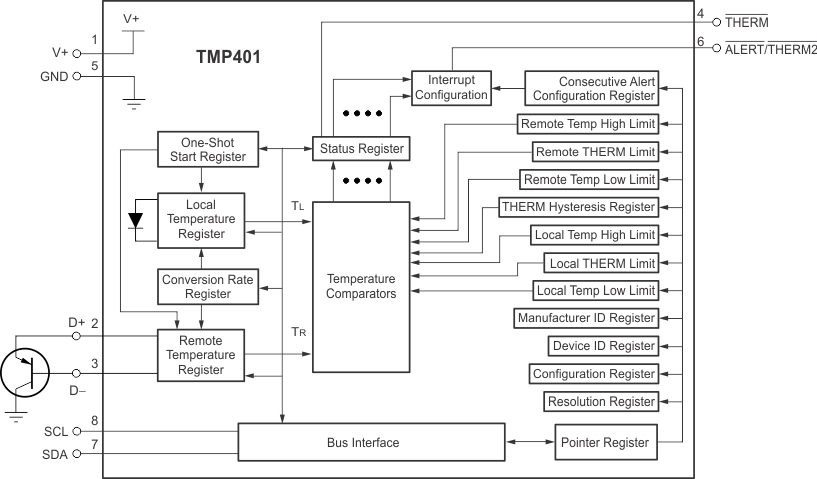SBOS371B August 2006 – October 2014 TMP401
PRODUCTION DATA.
- 1 Features
- 2 Applications
- 3 Description
- 4 Revision History
- 5 Pin Configuration and Functions
- 6 Specifications
- 7 Detailed Description
- 8 Application and Implementation
- 9 Power-Supply Recommendations
- 10Layout
- 11Device and Documentation Support
- 12Mechanical, Packaging, and Orderable Information
Package Options
Mechanical Data (Package|Pins)
- DGK|8
Thermal pad, mechanical data (Package|Pins)
- DGK|8
Orderable Information
1 Features
2 Applications
3 Description
The TMP401 is a remote temperature sensor monitor with a built-in local temperature sensor. The remote sensor is capable of monitoring the temperature of any external PN junction. Typical sense elements include low-cost NPN- or PNP-type transistors and diodes, or accessible thermal diodes integrated within microcontrollers, microprocessors, or field-programmable gate arrays (FPGAs).
The accuracy of the remote sensor is ±1°C for multiple IC manufacturers, with no calibration needed. The two-wire serial interface accepts SMBus write byte, read byte, send byte, and receive byte commands to program alarm thresholds and to read temperature data.
Features included in the TMP401 are series resistance cancellation, wide remote temperature measurement range (up to +150°C), diode fault detection, and temperature alert functions.
Device Information(1)
| PART NUMBER | PACKAGE | BODY SIZE (NOM) |
|---|---|---|
| TMP401 | VSSOP (8) | 3.00 mm × 3.00 mm |
- For all available packages, see the orderable addendum at the end of the datasheet.
